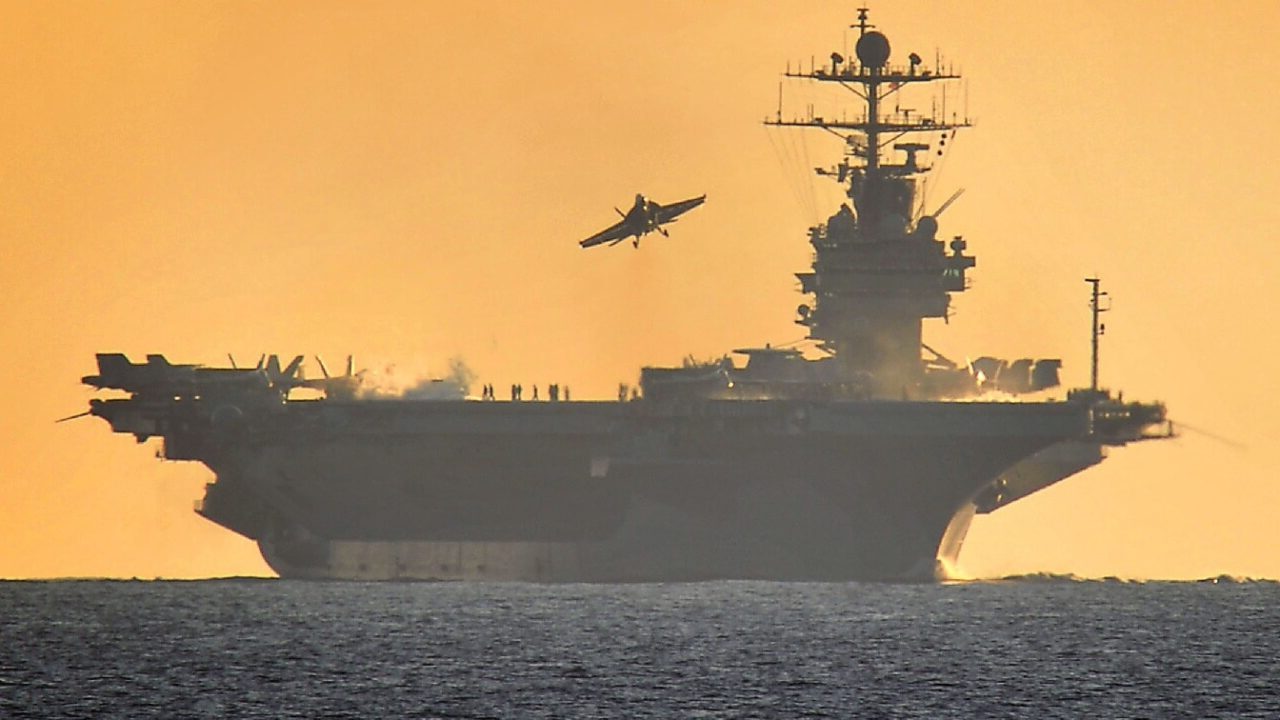Why Did Russia Never Go Aircraft Carrier Crazy? – The Russian Navy‘s one and only aircraft carrier is currently in port for maintenance and some say she may never sail again. Admiral Kuznetsov, which was laid down in the final years of the Soviet era, is currently undergoing an accident-plagued refit that might be enough to convince the Kremlin that Russia doesn’t really need an aircraft carrier.
In fact, Russia never really went “carrier crazy” and unless its goals were to change significantly, Moscow would be wise to spend the money elsewhere.
Russia had long been a land-based power and despite efforts under the Soviet Union to create a powerful navy, it never was able to rival the United States Navy as a carrier force.
Origins of the Russian Navy
The origins of the Russian Navy actually date back to the fourth century, when the first Slavic flotillas were used to navigate the rivers of Russia, while it has existed as an official force in some form since 1696. The first true iteration of the Russian Navy was established by Peter the Great (Peter I) who was quoted as saying, “A ruler that has but an army has one hand, but he who has a navy has both.”
Yet, despite Peter the Great’s ambitions, as well as those of Catherine the Great who established the Black Sea Fleet, Russia was never a true “naval power” and that fact was made abundantly clear centuries later during the Russo-Japanese War in 1905.
At the time the Russian Navy had been considered the third most powerful in the world, but the war proved to be a catastrophe for the Russian military in general and the Russian Navy in particular. Russia faced a crushing threat from the Japanese in the Battle of Port Arthur, and afterward, warships of the Russian Navy’s Baltic Fleet took part in an arduous journey to turn the tide in the war. However, instead, that resulted in its utter and complete destruction.
Russia then focused on building battleships, and it wasn’t until the Cold War that Moscow saw the need for a powerful Navy. In fact, the Soviet Union actually had the largest navy in the world but it never built a warship to truly rival the U.S. Navy’s supercarriers. Instead, it was largely a force of cruisers and submarines.
Soviet Aircraft Carrier Efforts
As an effort to correct the carrier imbalance in the 1980s, Moscow ordered the construction of a new supercarrier that would be on par with those of its likely adversaries and looked to the canceled Project 1153 Orel (Eagle), which never advanced beyond the blueprint stage.
With a displacement of 85,000 tonnes, the Soviet supercarrier would have been larger than the U.S. Navy’s Forrestal-class aircraft carriers, yet still smaller than the contemporary Nimitz-class. The new warship – which was initially named Kremlin before being renamed Ulyanovsk in honor of the birthplace of Vladimir Lenin – was to represent a major advancement over the Soviet Navy’s Kuznetsov-class, which utilized a ski jump to launch aircraft.
It wasn’t to be, however.
In the final days of the Soviet era, there was a lack of funding, material, and notably little political support to continue the construction. Even before the official dissolution of the Soviet Union, construction was halted and the vessel’s name was struck from the naval register. The remains of the warship were sold for scrapping in 1992 – finally ending the Soviet Navy’s only attempt to build a supercarrier.
Location, Location, Location
Since the dissolution of the Soviet Union, there has been talking in the Kremlin to build a fleet of carriers. Yet, it has been Beijing not Moscow that has made the most progress. There are a few reasons at play.
First, China now has the largest naval manufacturing capability in the world, while Russia can barely refit its aging warships. There is little reason to believe that even if Russian President Vladimir Putin were to find the funds to build a new carrier the Russian industry is up to the task.
But another issue that was true in the era of Catherine the Great remains true today. Russia simply lacks the facility to base a carrier. The modern Russian Navy consists of four fleets and one flotilla – the Northern Fleet, Baltic Fleet, Black Sea Fleet, Pacific Fleet, and Caspian Flotilla.
The Black Sea Fleet must transit Turkish waters when leaving its home base at Sevastopol, while the Baltic Fleet must pass through Skagerrak – the strait between Denmark and the coasts of Norway and Sweden. Only the Northern and Pacific Fleets are provided with direct access to the open ocean, but both fleets are headquartered in ports known for extreme winter weather, which is far from ideal for carrier operations.
As they say in real estate, it is about “location, location, location.”
The other part of the equation is that Russia lacks overseas bases, which has been crucial for the U.S. Navy’s carrier operations. Russia’s naval facility in Tartus is not yet capable of hosting the Kuznetsov-class carrier. While Moscow may have goals of having overseas bases, for now, it doesn’t.
Carriers that would be stuck in the Baltic or Black Seas, or forced to endure the harsh weather in the Barent Sea and the Russian Far East would be of little use for Moscow. Moreover, all those locations are situated not far from a potential adversary, which means that a carrier could be caught in port in the event of war.
All this is why Russia never did – and likely never will – go carrier crazy.
Now a Senior Editor for 1945, Peter Suciu is a Michigan-based writer who has contributed to more than four dozen magazines, newspapers and websites. He regularly writes about military hardware, and is the author of several books on military headgear including A Gallery of Military Headdress, which is available on Amazon.com. Peter is also a Contributing Writer for Forbes.

